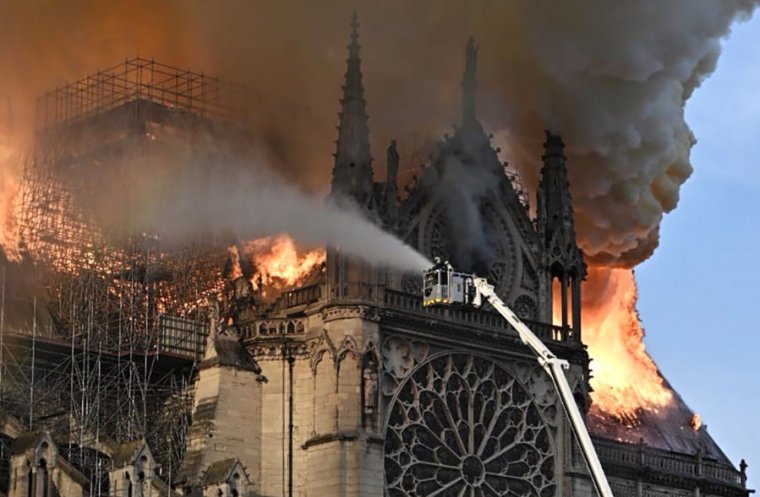Notre Dame Cathedral will never be the same, but it can be rebuilt
Ars Technica » Scientific Method 2019-04-16

Enlarge / PARIS - APRIL 15, 2019: Emergency services tackle a fire at Notre-Dame de Paris, a Catholic cathedral founded in the 12th century. (credit: Stoyan Vassev/TASS/Getty Images)
After a long night of work by over 400 Paris firefighters, the fire at Notre Dame Cathedral is beginning to cool as of 7:00pm Eastern Time (1:00am in Paris). We're still not sure about the extent of the damage, but as Paris and the rest of the world watch the fire slowly dying, attention starts to shift to what can be salvaged and rebuilt. And art historians and architects have incredible records of the cathedral, which has been damaged, rebuilt, nearly abandoned, and renovated many times throughout its long history.
Roof and main spire destroyed, extent of damage unknown
Notre Dame's roof and its support structure of 800-year-old oak timbers had almost completely succumbed to the flames. Firefighters reported the cathedral's bell towers safe and said that many works of art had been rescued or were already stored in areas believed safe from the fire. The main spire—750 tons of oak lined with lead—collapsed in flames around 2pm ET, landing on the wooden roof.
The trees that made up the roof's wooden structure were cut down around 1160, and some sources estimate that the beams accounted for 13,000 trees, or about 21 hectares of Medieval forest, many of which had been growing since the 800s or 900s. "You have a stage in France where deforestation was a problem; these buildings consumed huge amounts of wood." That's according to Columbia University art historian Stephen Murray, who spoke with Ars Technica. All that wood, he said, supported an outer roof of lead—until the wood burned and the roof collapsed.